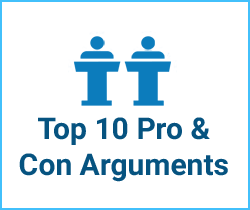Can Hormones Affect Sexual Orientation?
General Reference (not clearly pro or con)
Stanton Jones, PhD, Provost and Professor of Psychology at Wheaton College, and Mark Yarhouse, PsyD, Associate Professor of Psychology at Regent University, stated in their 2000 book Homosexuality: The Use of Scientific Research in the Church’s Moral Debate:
“Some researchers propose that human sexual orientation is determined before birth, probably between the second and fifth month of pregnancy. It is during this time that the fetus is exposed to sex hormones, its sexual anatomy develops, and its brain is ‘wired’ in a manner appropriate to its biological gender…
We should stress that hypothesized genetic and prenatal hormonal influences may be independent and exclusive of each other, or they may be interdependent and complementary. It is likely, indeed, that if there is a genetic element to the development of homosexuality, it probably works through prenatal and early childhood hormones.”
2000
PRO (yes)
Pro
Gerianne M. Alexander, Assistant Professor of Psychology at Texas A&M University, in the 2003 Archives of Sexual Behavior article “An Evolutionary Perspective of Sex-Typed Toy Preferences: Pink, Blue, and the Brain,” wrote:
“Girls with congenital adrenal hyperplasia, for example, are exposed to high levels of adrenal androgens [hormones] prenatally. Some research indicates that postnatally they show greater aggression, enhance (i.e. masculine) visuospatial abilities, more masculine occupational preferences, and an increased rate of bisexual or homosexual sexual orientation in fantasy and/or behavior.”
2003
Pro
Qazi Rahman, PhD, Lecturer in Psychobiology at the University of East London, UK, noted in a Mar. 25, 2003 Irish Examiner interview:
“Because we know that performance on these cognitive tests depends on the integrity of specific brain regions, the differences implicate robust differences between the brains of homosexual and heterosexual men and women and suggest that hormonal factors early in development (probably during the 1st trimester of pregnancy) produce these differences.”
Mar. 25, 2003
Pro
The British Broadcasting Corporation (BBC) News, reported in a June 30, 2003 article by Martin Hutchinson, “Hormone Link to Lesbianism”:
“The latest research, presented at the European Society of Human Reproduction and Embryology conference in Madrid on Monday, came from a clinic which is one of only two in the UK to offer fertility treatment to lesbian women.
Doctors there noticed a ‘staggering’ number of lesbian women, who, on investigation, were found to be suffering either from polycystic ovary syndrome, or a less serious but related condition in which their ovaries showed many of the same features, but without the external symptoms.
The researchers found that prevalence of this symptomless condition was 80% in the lesbian women they saw, compared with just 32% of their heterosexual patients.
Full-blown polycystic ovarian syndrome was present in 38% of lesbians, and 14% of the heterosexual women.
Lead researcher Dr Rina Agrawal said that the results suggested ‘significantly greater’ rates of hormone imbalance in the lesbian women.
She said that while there was no evidence that polycystic ovaries could be implicated as a cause of lesbianism, it was possible that this hormone imbalance could be linked to both the medical condition and sexuality.
She said: ‘We do hypothesize that hyperandrogenism, which is associated with polycystic ovary syndrome, may be one of the factors contributing to the sexual orientation of women.'”
June 30, 2003
CON (no)
Con
Amy Banks, MD, Clinical Instructor in Psychiatry at Harvard Medical School, and Nanette K. Gartrell, MD, former Associate Clinical Professor of Psychiatry at the University of California, San Francisco, wrote in their 1995 Journal of Homosexuality article “Hormones and Sexual Orientation: A Questionable Link”:
“Studies of men and women who experienced prenatal defects in hormone metabolism have not found a concurrent increase in homosexual behavior.
Overall, the data do not support a causal connection between hormones and human sexual orientation.”
1995
Con
William Byne, MD, PhD, Director of the Laboratory of Neuroanatomy and Morphometrics at Mount Sinai School of Medicine, stated in the 1995 Journal of Homosexuality article “Science and Belief: Psychobiological Research on Sexual Orientation”:
“The dominant paradigm that generates support for biological theories of sexual orientation has profound conceptual flaws…
The current consensus opinion is that no causal relationship exists between adult hormonal status and sexual orientation.
Currently, the major impetus for speculation and research concerning an endocrinological basis for sexual orientation derives from animal studies… Such studies have established the prenatal hormonal hypothesis for sexual differentiation of the rodent brain…
The problems inherent in using studies of mating behaviors in rodents…to formulate a theory of sexual orientation in humans are immense…
Thus, the prenatal hormonal hypothesis as derived from animal studies cannot account for exclusively homosexual behavior in men with normal male genitalia.”
1995
Con
Paul H. Van Wyk, PhD, Associate Professor of Psychology at Auburn University, and Chrisann Schiro-Geist, PhD, Professor in the Department of Educational Research and Psychology at University of Memphis, in their 1995 Journal of Homosexuality article “Biology of Bisexuality: Critique and Observations,” wrote:
“In animals, behavior tends to be controlled more or less by known biological variables, including hormones. There is ample evidence from hundreds of studies that hormones, either prenatally, perinatally, or in adulthood, can influence the sexual behavior of mammals…
Human sexual orientation is influenced by biological, cognitive, cultural, and subcultural variables in interaction, leading to multiple types of heterosexuals, bisexuals, and homosexuals… [T]here is so much variation within each group that the chances of finding any small set of variables which will account neatly both for average differences between groups with differing sexual orientations and for variations within groups approaches the vanishing point.”
1995


